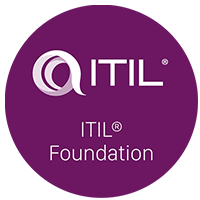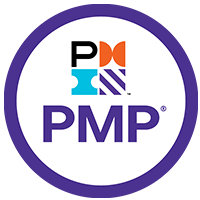In an age where data flows like an unending river, the sheer volume generated by businesses and individuals alike has reached staggering heights, with exabytes produced daily. As this digital deluge intensifies, the need for robust, scalable, and intelligent storage solutions has surged to unprecedented levels. Cloud storage, once seen merely as a handy alternative for data management, has firmly cemented itself as a vital pillar of our interconnected digital existence. The landscape of cloud storage is dynamic and ever-evolving, shaped by innovative trends that promise to revolutionize how we handle our data.
As we look towards 2025, the cloud storage market is not just on an upward trajectory; it’s soaring to new heights, projected to exceed a remarkable $210 billion by 2033. This explosive growth is propelled by a convergence of factors, including the widespread adoption of cloud-native applications, the rapid expansion of remote work arrangements, and the relentless accumulation of unstructured data stemming from the Internet of Things (IoT), artificial intelligence (AI), and advanced analytics.
So, what are the prominent trends casting their influence on the future of cloud storage?
Let’s delve deeper:
1. The Rise of Hybrid and Multi-Cloud Strategies: The era of relying on a singular cloud provider is becoming a relic of the past. Companies are increasingly adopting hybrid and multi-cloud approaches, which seamlessly combine public cloud services with robust private cloud infrastructures. This strategy also frequently involves leveraging multiple public cloud providers concurrently. The benefits of this approach are multifaceted:
– Flexibility and Avoiding Vendor Lock-In: Organizations can cherry-pick the best services from a variety of providers tailored for specific workloads, mitigating the risks associated with dependency on a single vendor.
– Cost Optimization: Companies are empowered to allocate workloads to the most economically favorable environment—whether that means preserving sensitive data on-premises or utilizing public cloud resources for scalable, less critical applications.
– Elevated Security and Compliance: Sensitive information can be safeguarded within private environments, while public cloud services can handle non-sensitive workloads, thereby adhering to varying regulatory requirements.
– Disaster Recovery and Resilience: By dispersing data across diverse environments, businesses can vastly enhance their continuity and recovery strategies in the event of outages or cyber threats.
2. The Emergence of Edge Computing: Bridging Proximity and Efficiency – With the proliferation of IoT devices and the increasing necessity for real-time data processing, edge computing is rapidly gaining traction. This paradigm shifts the focus of computation and data storage to the network’s periphery—the “edge”—where data is created.
– Reduced Latency: By processing data at or near its source, the time required to glean insights and enact decisions is drastically minimized—essential for applications such as autonomous vehicles, smart manufacturing, and real-time analytics.
– Optimized Bandwidth Utilization: Only pertinent data makes the journey to centralized clouds, curbing bandwidth expenditures and alleviating network congestion.
– Heightened Security and Privacy: Localized processing diminishes the need to transfer sensitive information to cloud infrastructures, thereby bolstering data privacy.
– AI-Enabled Edge Solutions: Embedding AI capabilities directly into edge devices enables swift decision-making and intelligent automation without relying on continuous cloud connectivity.
3. AI and Machine Learning: Revolutionizing Storage Management – AI and machine learning have transcended their roles as mere adjuncts to cloud processes; they are fundamentally transforming cloud storage operations.
– AI-Powered Storage Optimization: Advanced algorithms analyze data access trends, intelligently tiering information to the most cost-effective storage tiers (be it hot, cool, or cold), optimizing resource allocation in the process.
– Predictive Maintenance: AI’s capability to forecast potential storage failures ahead of time allows for proactive interventions, significantly reducing potential downtime.
– Enhanced Security Measures: AI-driven threat detection and anomaly recognition play a critical role in safeguarding sensitive data housed in the cloud.
– Automated Data Management: From streamlined data classification to automated backups and comprehensive data lifecycle management, AI is simplifying the intricacies of storage operations.
4. Commitment to Sustainability: The Green Cloud Initiative – As awareness of the environment deepens, sustainable and eco-friendly cloud storage solutions are emerging as key focus areas. Given that data centers are notorious for their substantial energy consumption, providers are increasingly pressured to minimize their carbon footprint.
– Harnessing Renewable Energy: An increasing number of cloud providers are committing to powering their data centers with sustainable energy sources.
– Innovations in Energy-Efficient Hardware: Cutting-edge designs in hardware and cooling systems are transforming data centers into more energy-efficient entities.
– Smart Data Management Practices: Techniques such as cold storage for infrequently accessed data, deduplication, and compression practices aim to lower energy consumption related to data storage and transfer.
– Transparent Sustainability Reporting: Companies are stepping up their efforts to present clearer sustainability roadmaps, openly reporting on their environmental initiatives and achievements.
5. Unwavering Focus on Security and Compliance: A Critical Imperative – As the volume of critical data migrating to the cloud continues to soar, the importance of security and compliance cannot be overstated. The adaptability of cyber threats requires robust and innovative protective measures.
– Zero-Trust Architectures: Embracing a philosophy of “never trust, always verify,” organizations ensure that no user or device is granted automatic access, regardless of location.
– Advanced Encryption Techniques: Evolving encryption methodologies are crucial for safeguarding data both at rest and in transit.
– Blockchain Integration: The exploration of blockchain technology offers promising avenues to enhance data integrity, ensuring unparalleled auditability across cloud storage solutions.
Final Takeaway
As we navigate the complexities of our data-rich environment, these trends are setting the stage for a cloud storage landscape that is more efficient, secure, and sustainable than ever before.
























